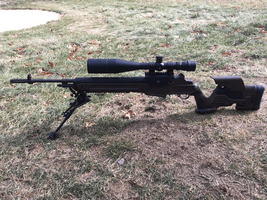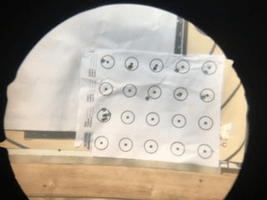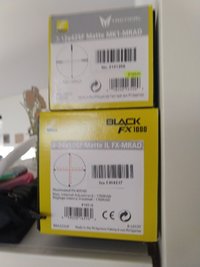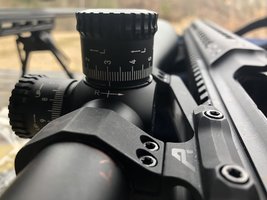- Joined
- Feb 22, 2012
- Messages
- 225
- Likes
- 281
I am debating which scope to buy, both are Nikon FX1000 black. One is 6-24x50 the other one is 4-16x50.
The rifles is question are M1A with JAE chassis and Criterion medium profile stainless barrel and AR10 with 20 in stainless target barrel. Both are accurate for a semi-auto.
Field of view at 100yds:
6-24x50: 18 – 4.7 ft
4-16x50: 27.2 - 6.8 feet
Both seem like nice clear glass. I am wondering if I would be sacrificing too much field of view by going 6-24x50 in return for being able to clearly see things at ranges that a semi-auto .308 won't be able to hit anyway?
I am over 40, my eyesight is not as good as it used to be. Good glass makes a difference. I struggled at 800-1000 yards with my .308 bolt gun that had Leupold 4-10x40, so I took my Leupold 8.5-25x50 from my .338 bolt gun and moved it to the .308. It made all the difference in the world.
On one hand, I accept the fact that my eyes need help at this age (I had no problem shooting 3.5 and 4x fixed power 25 years ago). On the other hand I don't want to give up too much field of view. I am leaning towards 4-16x50, but wondering if I will regret it. Not looking to hunt with it, mostly target shooting.
The rifles is question are M1A with JAE chassis and Criterion medium profile stainless barrel and AR10 with 20 in stainless target barrel. Both are accurate for a semi-auto.
Field of view at 100yds:
6-24x50: 18 – 4.7 ft
4-16x50: 27.2 - 6.8 feet
Both seem like nice clear glass. I am wondering if I would be sacrificing too much field of view by going 6-24x50 in return for being able to clearly see things at ranges that a semi-auto .308 won't be able to hit anyway?
I am over 40, my eyesight is not as good as it used to be. Good glass makes a difference. I struggled at 800-1000 yards with my .308 bolt gun that had Leupold 4-10x40, so I took my Leupold 8.5-25x50 from my .338 bolt gun and moved it to the .308. It made all the difference in the world.
On one hand, I accept the fact that my eyes need help at this age (I had no problem shooting 3.5 and 4x fixed power 25 years ago). On the other hand I don't want to give up too much field of view. I am leaning towards 4-16x50, but wondering if I will regret it. Not looking to hunt with it, mostly target shooting.





